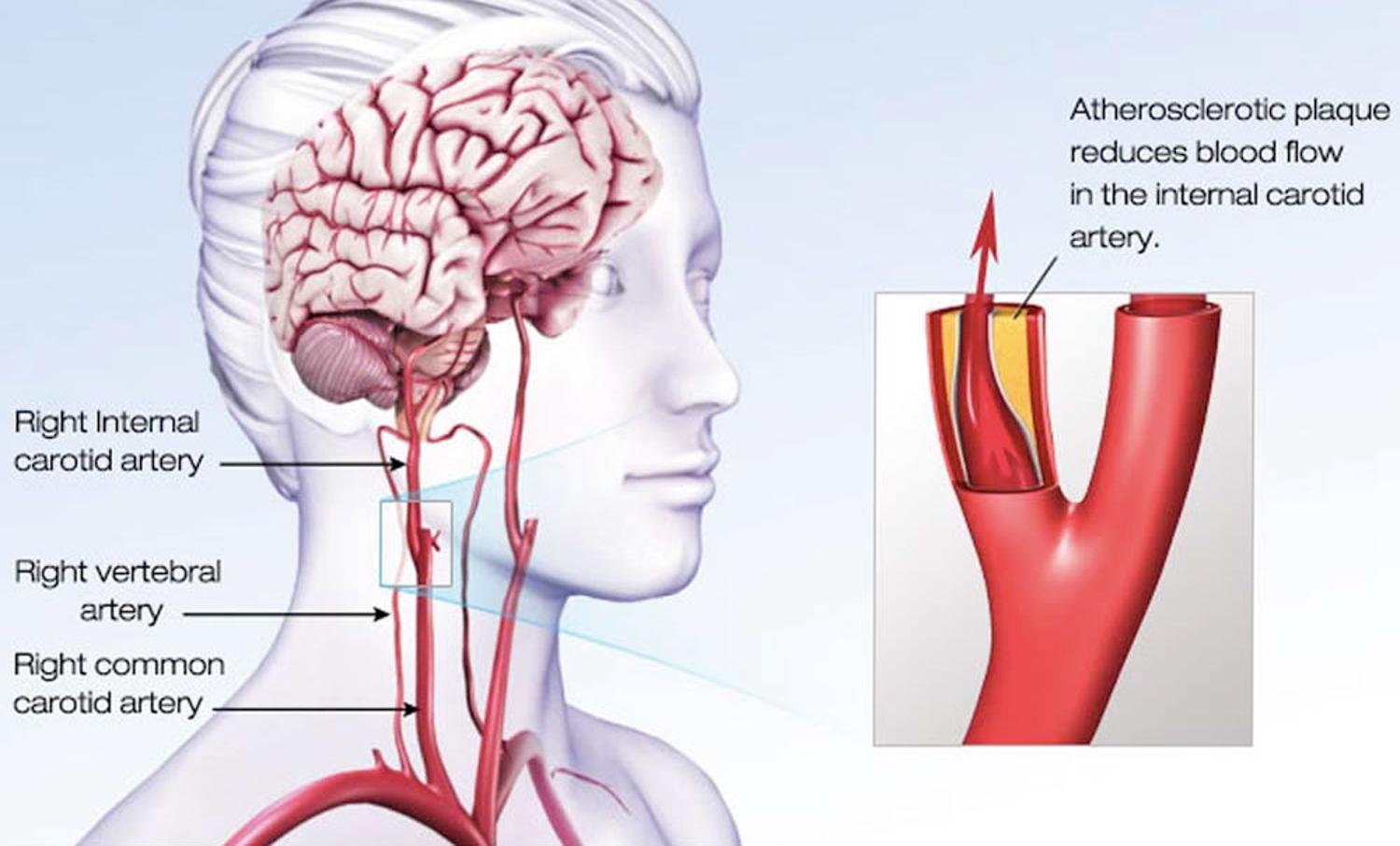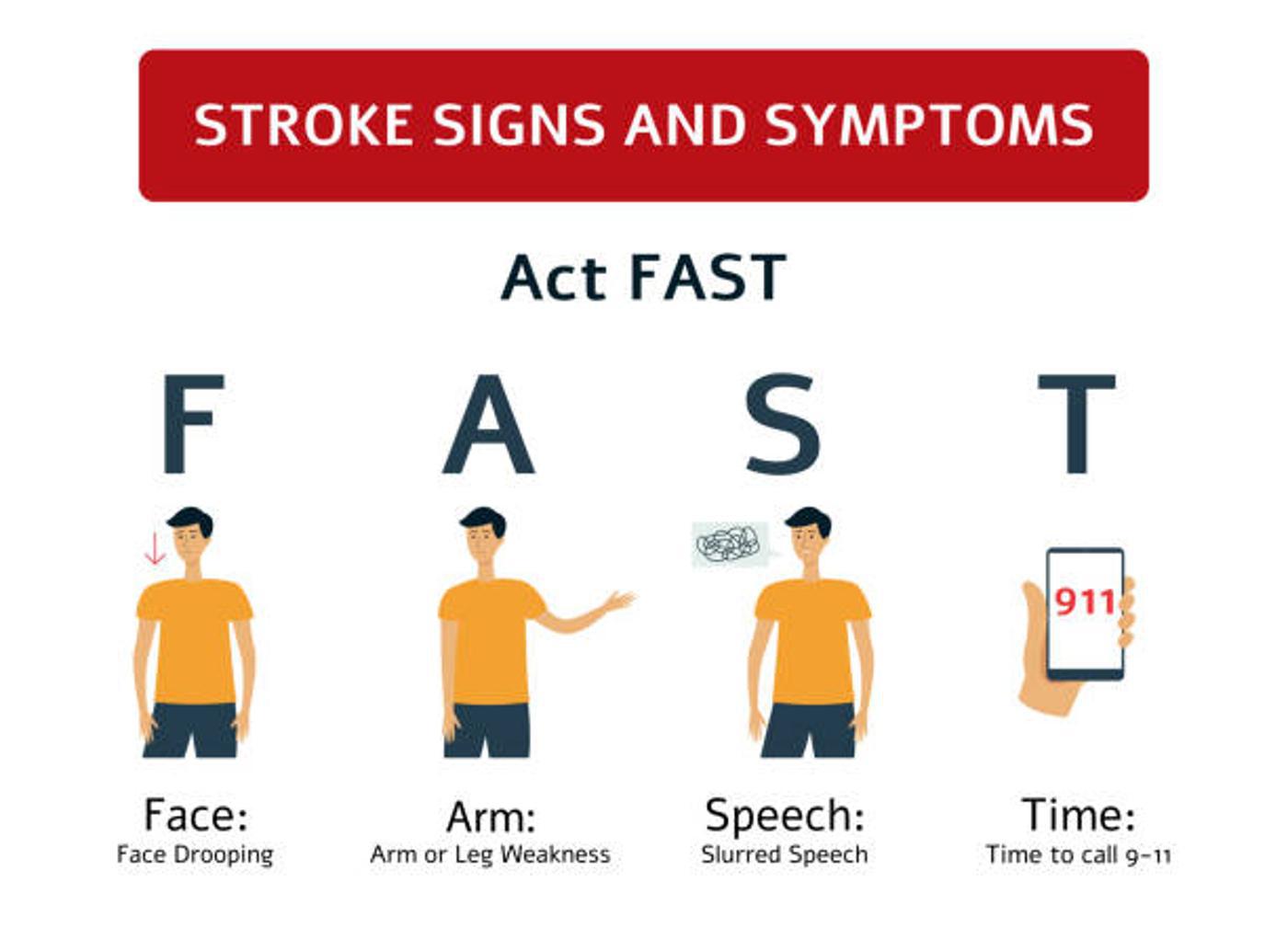In the United States alone, more than 795,000 people suffer from a stroke every year. Sadly, 140,000 of those Americans lose their lives because of that stroke.
Therefore, scientists have been desperate to find ways to determine if a patient may experience a stroke and get them the help they need before it’s too late.
A Recent Study

A recent study released by the American Heart Association shows that 43% of patients who experienced a stroke had the same symptoms exactly one week earlier.
The association hopes that this information will help people and medical professionals understand when a stroke is coming and potentially save hundreds of lives.
What Is a Stroke?

A stroke is considered a cerebrovascular disease, meaning it affects the blood vessels that provide the brain with oxygen. If the brain doesn’t receive ample oxygen, the brain cells begin to die immediately.
If caught early, doctors can provide treatment that will minimize the amount of brain damage caused by the stroke. However, if left untreated, strokes lead to severe side effects and are often fatal.
What Is a Mini-Stroke?

It’s important to note that in addition to ischemic and hemorrhagic strokes, people can also experience mini-strokes or transient ischemic attacks (TIA).
A stroke occurs when there is a permanent or complete blockage in the artery that sends oxygen to the brain, but a TIA occurs when there is a temporary or partial blockage.
The Results of a TIA

A regular stroke most often causes permanent damage to the brain, whereas a TIA may cause the immediate symptoms of a stroke, but they will dissipate over time.
The only remnants of a TIA are little black spots in the brain.
Many People Don’t Realize They’ve Had a TIA

Like a regular stroke, TIAs can cause slurred speech or difficulty understanding language, dizziness, loss of balance, double vision, and weakness, numbness, or paralysis in the face, arm, or leg.
However, these symptoms are usually extremely mild and last only a few minutes. Additionally, some who experience a TIA feel nothing at all.
Short Live Symptoms

TIAs are caused the same way a stroke is caused, but the symptoms are short-lived. These symptoms can only last for several minutes to an hour.
But TIAs could be an early warning sign that a more severe stroke may be coming.
Doctors Have Studied the Connection Between TIAs and Strokes

Unfortunately, many patients don’t even know they had a TIA, let alone get medical treatment. This means medical researchers don’t know exactly how many people experience TIAs yearly.
But they have noticed something exceptionally interesting in those who did report experiencing a TIA: 20% had a full-blown stroke less than three months later.
An Early Warning Sign

TIAs can be a warning sign that a more severe stroke may be coming very soon. The risk of a stroke is the highest in the first few weeks after a TIA.
This is why it is important to seek medical attention as soon as you notice symptoms of a TIA.
Early Signs of a Stroke

Some early signs of a stroke could be numbness or weakness in your arms, legs, or face, or you start to notice that it is difficult to walk.
These are signs that a mini-stoke could be in process or that the future stroke is near.
Predicting a Stroke

There can be early warning signs in your daily life that a stroke is in your near future. Severe headaches or vision problems could be signs of a mini-stroke in the next 90 days.
It is not always possible to predict a stroke one month before it happens. But knowing the early signs of stroke is helpful to monitor your future health.
Study Shows that 43% of Stroke Victims Experienced a TIA 1 Week Prior

The study, which the American Heart Association shared in January 2023, showed that “nearly 1 in 5 of those who have a TIA will have a full-blown stroke within three months after the TIA.”
But it also found that 43% of those who have a TIA will have a regular stroke within less than a week. And doctors report that the risk of having a stroke is highest within 48 hours after the mini-stroke.
It’s Crucial to Contact Your Doctor If You Have any TIA Symptoms

With this information in mind, doctors are desperate for people to understand and be on the lookout for the symptoms of TIAs.
Fortunately, if a patient contacts their doctor immediately after suffering a mini-stroke, there are tactics they can take to prevent the full-blown stroke, which is likely on the way.
How Can Doctors Prevent Strokes?

Many people assume that because strokes are caused by blockages in the brain, doctors can’t do anything to prevent them. But that’s simply not true.
After someone experiences a TIA, doctors can and do prescribe clopidogrel, an antiplatelet medicine that prevents blood cells from sticking together, and aspirin together to significantly decrease the chances of a regular stroke.
Can You Protect Yourself From TIAs?

In addition to contacting your doctor immediately and receiving treatment for a TIA to lower your chances of experiencing a stroke, there are also several things you can do in your life to prevent TIAs and subsequent strokes altogether.
According to the Mayo Clinic, to protect yourself from a TIA or stroke, you should maintain healthy blood pressure, lower cholesterol, prevent or manage diabetes, maintain a healthy weight, exercise regularly, eat a balanced diet, and skip or limit alcohol and tobacco use.
Anyone Can Experience a Stroke

Of course, even people who follow each and every one of these instructions could still experience a TIA or a stroke. Doctors understand that there are risk factors, including age, family history, and various existing conditions, are out of our control.
Therefore, it’s important that everyone understands that mini-strokes can lead to strokes, that anyone who experiences a TIA must see a doctor right away, and what to do if you are experiencing a full-blown stroke.
People Often Brush off TIAs

Although a TIA often resolves within 24 hours, you should still be concerned about the mini-stroke you just experienced. While the symptoms fade, making them easily mistaken for something else like a migraine, a pinched never, or other issues, the suddenness of them should be the first thing to insinuate that something else is going on.
If you can’t think of an obvious alternative explanation for your symptoms, go to the emergency room for a check-up. The worst thing you can do is wait to see what else might be waiting for you.
Stay Prepared

Another way to prepare is by keeping a list that includes the nearest hospital with a 24-hour stroke facility.
You should also make a note of any medications you take or that have caused allergic reactions so you can hand them to the nurses on duty.
Remember F.A.S.T

Strokes can happen to anyone at any time. Knowing the signs of a stroke can help you find the best medical attention when the symptoms start to show themselves.
Health states that there are a few ways to monitor your health using the F.A.S.T. This acronym can help you track the common symptoms and when to call 911.
FAST: Stroke Signs and Symptoms

When someone is experiencing a stroke, you need to act FAST. This acronym has been devised by medical professionals in order to save people from fatal and potentially detrimental strokes and it’s incredibly easy to remember.
“F” is for face: a drooping face is the first sign of a stroke. “A” is for arm: a person will then experience numbness or complete loss of feeling in their arm on one side. “S” stands for speech: a person will likely begin slurring their speech. “T” is for time: at this point, it’s time to call 9-1-1.
Who Is at Risk?

Anyone can be at risk for TIA. As you get older, stroke rates increase by double every 10 years. Those who have previously had a stroke are also at high risk for TIA.
If you have high blood pressure, smoke tobacco, drink too much alcohol, or do not live a moderately health lifestyle.
You Are at Risk

Many people believe that strokes and TIAs only affect older people, but studies have shown that younger people experience more and more strokes due to the increase in obesity in the country and sedentary behavior.
According to a 2020 study from the Centers for Disease Control and Prevention, one third of adults in the United States don’t know all five of the most common symptoms of a stroke.
Understanding TIAs and Strokes Could Help Millions of People Around the World

Doctors can save someone from a fatal stroke if they can administer treatment quickly enough.
This study, as well as the American Heart Association, wants everyone to understand that educating themselves on TIAs, strokes, and the proper response could save their own and their loved ones’ lives.
Take Control of Your Health

The bottom line is that you should always see your doctor when your body doesn’t feel normal. It is better the jump on the issue as quickly as possible and find a solution before something worse comes along.
Creating an emergency plan is one of the best ways to ensure you’re prepared when things go wrong.








































